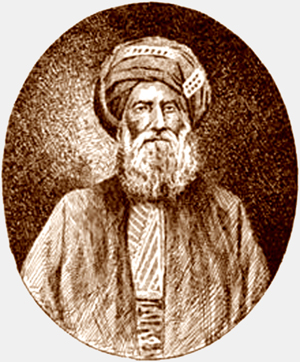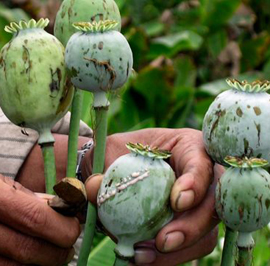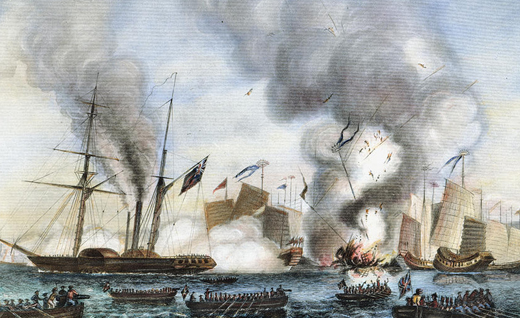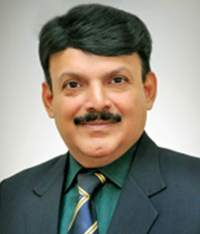The Don Who Made Two Empires to Clash
The Don Who Made Two Empires to Clash
Mangalore Today News Network
Dr G ShreeKumar Menon
April 6, 2018: The term ‘Don’ evokes memories of Vito Corleone the fictional character in Mario Puzo’s novel The Godfather and in the first two of Francis Ford Coppola’s three Godfather films, in which he was portrayed by Marlon Brando in the Godfather. Currently it’s used primarily to refer to the leaders of mafia families, to the extent that the word "don" has entered the English language specifically referring to "the boss of a mafia family". Many drug barons of South America are also referred to as ‘Don’, notably Pablo Escobar. Pablo Escobar (1949–1993) remains publicly the most powerful and wealthiest drug lord in history. Other famous ‘Dons’ were El Loco, José Santacruz-Londoño, Gilberto Rodriguez Orejuela, and Jorge Alberto Rodriguez. In India also many drug peddlers were raised to the status of ‘Dons’ by the print media and the film world. But who was the real Don?
When I went to assume charge as Commissioner, Customs & Excise, at Pune, the postal address was intriguing, it read “Sassoon Road”, which I later found out was the condensed version of David Sassoon. Who was this person? Many had no idea, and gave vague replies. Ultimately, I asked an erudite Superintendent who had deep knowledge of History. He enlightened me that the greatest drug kingpin in history was an Orthodox Jew, and he was David Sassoon. His business, which included a monopoly of the opium-trade, extended as far as Yokohama, Nagasaki, and other cities in Japan.

David Sassoon
David Sassoon was born in Baghdad in 1832 to Saleh Sassoon, a businessman and leader of that city’s Jewish community. They claimed descent from a Spanish family, the Ibn Shoshans. When, David Sassoon, who like his father, served as treasurer to the governors of Baghdad, clashed with one of them, Daud Pasha, he moved his family to Persia in 1826, and then to Bombay by 1832. Like other refugees who came from different parts of the world, India gave them a great opportunity to grow and flourish. Sassoon established a booming trade, bringing Indian opium and cotton to China, in exchange for silver, tea and silk. These products were sold in England. Finished products from Britain, as well as cash, were then sent to India where they were used to buy opium. By the 1870s, David Sassoon had come to dominate the trade of opium to China, having pushed the British firm Jardine Matheson and the Parsi traders of Bombay out of the business. By the end of the 1850’s it was said of him that "silver and gold, silks, gums and spices, opium and cotton, wool and wheat-- whatever moves over sea or land feels the hand or bears the mark of Sassoon and Company".
• Thereafter, the British government granted Sassoon "monopoly rights" to all manufacture of cotton goods, silk and most important of all - Opium - then the most addictive drug in the world!  The Jewish Encyclopedia of 1905, states that Sassoon expanded his opium trade into China and Japan. He placed his eight sons in charge of the various major opium exchanges in China. Sassoon’s sons were busy pushing this mind-destroying drug in Canton, China. It is estimated that during 1830 - 1831 they traded nearly 18,956 chests of opium earning millions of dollars. Part of the profits went to Queen Victoria and the British government. In the year 1836 the trade increased to over 30,000 chests and drug addiction in coastal cities of China became endemic.
The Jewish Encyclopedia of 1905, states that Sassoon expanded his opium trade into China and Japan. He placed his eight sons in charge of the various major opium exchanges in China. Sassoon’s sons were busy pushing this mind-destroying drug in Canton, China. It is estimated that during 1830 - 1831 they traded nearly 18,956 chests of opium earning millions of dollars. Part of the profits went to Queen Victoria and the British government. In the year 1836 the trade increased to over 30,000 chests and drug addiction in coastal cities of China became endemic.
In 1839, the Manchu Emperor ordered that the Opium trade be halted. He ordered the Commissioner of Canton, Lin Tse-hsu, to lead a campaign against opium. Lin seized 2,000 chests of Sassoon opium and threw it into the river. An outraged David Sassoon demanded that Great Britain retaliate militarily. Thus, the Opium Wars began with the British Army fighting as mercenaries of the Sassoon’s! The First Opium War was fought from March 18, 1839 to August 29, 1842 and was also known as the First Anglo-Chinese War. 69 British troops and approximately 18,000 Chinese soldiers perished. As a result of the war, Britain won trade rights, access to five treaty ports, and Hong Kong. The Chinese Army, high on opium addiction, was routed by the British Army, which also comprised of several Indian Military regiments. British Commander, Major General Sir Hugh Gough led the battalions comprising of:
•1st company Madras Rifles,
•2nd Madras Native Infantry,
•6th Madras Native Infantry,
•14th Madras Native Infantry,
•The Bengal Army
•The unit of the Madras Foot Artillery was awarded the honor title “Dragon”, as the Unit captured a Chinese Dragon Cannon.
The war culminated in 1842 with the signing of "The Treaty of Nanking." This included special clauses inserted to guarantee the Sassoons the right to enslave an entire population with opium! The notable provisions in this "peace treaty" included "1) Full legalization of the opium trade in China, 2) compensation from the opium stockpiles confiscated by Lin of 2 million pounds, 3) territorial sovereignty for the British Crown over several designated offshore islands”. Thus, China not only had to pay Sassoon the cost of his dumped opium but reimburse England a sum of 21 million pounds for the cost of the war!
Britain launched the Opium Wars to give the Sassoons exclusive rights to drug an entire nation! David Sassoon and his sons came to be known as "The Rothschilds of The Far East," for their complete monopoly over the opium trade. He placed his eight sons in charge of the various major opium exchanges in China.
However, British Prime Minister Palmerston wrote to the Crown Commissioner Captain Charles Elliot that the treaty didn’t go far enough. He said it should have been rejected out of hand because: "After all, our naval power is so strong that we can tell the Emperor what we mean to hold rather than what he would cede. We must demand the admission of opium into interior China as an article of lawful commerce and increase the indemnity payments and British access to several additional Chinese ports."
Sassoon also was not satisfied and hence demanded the right to sell opium throughout the nation. The Manchus resisted and this paved the way for the Second Opium War, which was fought between 1858 - 1860. Palmerston declared that all of interior China must be open for uninterrupted opium traffic. The British suffered a defeat at the Taku Forts in June 1859 when sailors, ordered to seize the forts, were run aground in the mud-choked harbor. Several hundreds were killed or captured. An enraged Palmerston said: "We shall teach such a lesson to these perfidious hordes that the name of Europe will hereafter be a passport of fear."
In October 1859 the British besieged Peking. When the city fell, British commander Lord Elgin ordered the temples and other sacred shrines in the city sacked and burned to the ground as a show of Britain’s absolute contempt for the Chinese. The Second Opium War resulted in approximately 2,900 Western troops killed or wounded, while China had 12,000 to 30,000 killed or wounded. Britain won southern Kowloon and Western powers got extraterritorial rights and trade privileges. China’s Summer Palaces were looted and burned. In the Second Opium war in 1860, four brigades of Indian Infantry
•Sikh Regiment
•Madras Regiment
•Bombay Native Infantry
•The Ludhiana Rifles
took part in the sacking of the Summer Palace, Yuanmingyuan,- the imperial summer palace of the Qing Dynasty.

In the new "Peace Treaty" of Oct.25, 1860; the British were assigned rights to vastly expanded opium trade covering seven-eighths of China, which brought in over 20 million pounds in 1864 alone. In that year, the Sassoons imported 58,681 chests of opium and by 1880 it had skyrocketed to 105,508 chests making the Sassoons the richest Jews in the world! England was given the Hong Kong peninsula as a colony and large sections of Amoy, Canton, Foochow, Ningbo and Shanghai. The Sassoons were now licensing opium dens in each British occupied area with large fees being collected by their Jewish agents. Sassoon would not allow any other race to engage in what he called “the Jews’ business." However, the British government would not allow any opium to be imported into Europe!
The Sassoon opium trade brought death and destruction to millions and still plagues Asia to this day. Their company was totally operated by Jews. The corrupt British monarchy honored them with privilege and knighthood. To this day the Sassoons are referred to in the history books as "great developers" of India but the source of their vast wealth is never mentioned!
David Sassoon died in his country house in Pune in 1864. His business interests were inherited by his son Sir Albert Sassoon.
Some of the prominent institutions built by David Sasoon and his family are
•David Sassoon Library & reading room, Fort Mumbai
•Magen David Synagogue, Byculla, Mumbai
•Jacob Sasoon High School, Byculla, Mumbai
•E.E.E. Sassoon High School, Byculla, Mumbai
•David Sassoon Hospital, JJ Hospital Premises, Byculla, Mumbai
•Masina Hospital, Byculla, Mumbai
•Knesset Eliyahoo Synagogue, Colaba, Mumbai
•Sassoon Dock, Colaba, Mumbai
•Elphinston Technological School, Parel, Mumbai
•Gateway of India
•The Bank of India, Fort (head office), Mumbai
•The David Sassoon Reformary and Deaf school, Matunga, Mumbai
•Sassoon Hospital, Pune
•Lady Rachel Sassoon Dispensary, Pune
•David Sassoon Vridha Ashram, Pune
This man had made two great empires to completely dance to his tunes. How many Dons of today can claim such power and influence? Many times, I think that if some of our missiles and military bases are named after David Sassoon, the enemy across the Himalayas would experience excruciating shame, explaining to their present and posterity how one Opium trader humiliated and crushed the mighty Chinese empire. If we were to name just one missile as ‘Sassoon’ it would be a constant reminder to our enemies, about their bête noire, who once brought them to utter ruination. Incidentally, the Opium Wars are also known as The Sassoon Opium Wars!
 About the author: Dr G ShreeKumar Menon, IRS (Rtd) Ph.D (Narcotics) is a Former Director General, National Academy of Customs Excise and Narcotics & Multi Disciplinary School of Economic Intelligence; Fellow, James Martin Center for Non Proliferation Studies, USA; Public Administration, Maxwell School of Public Administration, Syracuse University, USA and AOTS Scholar, Japan. He presently serves as Registrar, Yenepoya University, Mangalore – 575018. He may be reached at www.shreekumarmenon.com
About the author: Dr G ShreeKumar Menon, IRS (Rtd) Ph.D (Narcotics) is a Former Director General, National Academy of Customs Excise and Narcotics & Multi Disciplinary School of Economic Intelligence; Fellow, James Martin Center for Non Proliferation Studies, USA; Public Administration, Maxwell School of Public Administration, Syracuse University, USA and AOTS Scholar, Japan. He presently serves as Registrar, Yenepoya University, Mangalore – 575018. He may be reached at www.shreekumarmenon.com
- Need For ‘Students, Alcohol and Drugs’ survey
- New Synthetic Drugs Trapping Youth
- Mood Modifying Chips - Future of Drug Use
- Ramping up Indo-Bangla border security
- IITM- A premier educational Institution in a forest. What can we learn?
- Former PM, Manmohan Singh: Notable laws passed under his tenure
- Hashish on Ratnagiri Seashore
- The Poor cry out to Us: Do we respond?
- Clandestine Meth Labs Sprouting Across India
- Hydro ganja from Bangkok latest craze among youth in India
- "Memories to Treasure" Dr.Michael Lobo’s new book
- Dominance of Private Universities: Will it make education inaccessible to underprivileged students?
- Monti Phest: A rich heritage of South Canara
- Kashmir Bhavan in Bengaluru: A must visit place
- "MAI and I" Book of Angelic Emotions
- Draupadi Murmu - The New ’President of India’
- Anthony Ashram in the city grows a classic museum
- First College of Fisheries in India - A Golden Jubilarian
- Flushing Meadows - A Vintage Mansion
- The Colonel�s Bequest
- A Mangalorean PM and his RBI Governor Brother: The Extraordinary story of the Benegal Brothers
- There is no higher religion than Truth: Theosophical Society
- L�affaire - Ashu & Yiju of Mangalore
- Mangalore in Kowloon
- 1568 to 2018 AD: 450 years of Christianity in Mangaluru
- Vice President elect Naidu moves on from nadir to zenith, the phenomenal journey
- Embracing the Outdoors: How Heated Jackets Are Revolutionizing Cold Weather Activities
- Efficient and Sustainable Packaging Solutions with FIBCs
- The Hybrid Kilt Revolution | Where Tradition Gets Trendy
- Affordable Elegance | Embrace Style on a Budget with Cheap Kilts
- Unleashing Style and Functionality | Exploring Tactical Kilts
- Mangalore’s Heroic Lady marks 105th Birthday
- Santa the Christmas spirit
- Geriatric care: Mangalore strikes a fine balance
- The Don Who Made Two Empires to Clash
- CHITRAPUR SARASWATS - A Great Kanara Community
- Our new President Ram Nath Kovind’s significant journey to Rashtrapathi Bhavan
- Marriages made in heaven, big fat weddings made in India
- Eid insight - The giver of glad tidings
| Comments on this Article | |
| Mahesh, Mangalore | Fri, April-6-2018, 7:55 |
| Very educative article. Wonder who the modern day Sassoon’s are ? There is also a very busy dock at Mumbai called Sassoon’s Dock , which is operational to this day. | |
- CITY INFORMATION
- TRAVEL
- TOURIST INFORMATION
- HEALTH CARE
- MISCELLANEOUS




 Write Comment
Write Comment E-Mail To a Friend
E-Mail To a Friend Facebook
Facebook Twitter
Twitter  Print
Print 


